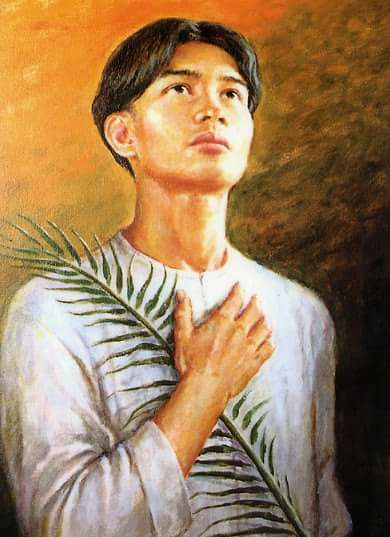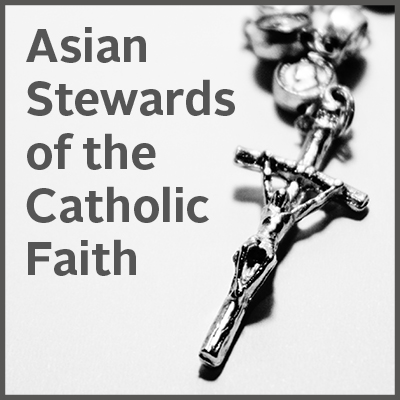St. Pedro Calungsod (Filipino)

Few details of the early life of St. Pedro Calungsod are known. Historical research identifies Ginatilan in Cebu, Hinunangan and Hinudayan in Southern Leyte, and the Molo district of Iloilo City, as possible places of origin. Regardless of his precise birthplace, all four locations were within the territory of the Diocese of Cebu at the time of Calungsod’s martyrdom.
In 1668, Calungsod, then around age 14, was amongst the exemplary young catechists chosen to accompany Spanish Jesuit missionaries to the Islas de los Ladrones (“Isles of Thieves”), which have since been renamed the Marianas Islands the year before to honor both the Virgin Mary and the mission’s benefactress, Maria Ana of Austria, Queen Regent of Spain.
Calungsod accompanied the priest Diego San Vitores to Guam to catechize the native Chamorros. Shortly after their arrival, a Chinese man named Choco, a criminal from Manila who was exiled in Guam, began spreading rumors that the baptismal water used by missionaries was poisonous. As some sickly Chamorro infants who were baptized died, many believed the story and held the missionaries responsible.
Calungsod and San Vitores went to the village of Tumon, Guam on April 2, 1672. They offered the village ruler, Chief Matapang, an invitation to join the Christian faith. However, influenced by Choco, Chief Matapang refused the invitation and was determined to kill the missionaries. Matapang searched for an accomplice and found another villager, a pagan named Hirao, who eventually acceded when Matapang branded him a coward.
While Matapang was away from his house, Calungsod and San Vitores baptized his baby girls, with the consent of his wife, a Christian. This made Matapang even more furious and led to the violent killing of Calungsod and San Vitores. Matapang and Hirao undressed the bodies of Calungsod and San Vitores, tied large stones to their feet, and brought to Tumon Bay, dumping the bodies in the water.
In 1980, Archbishop Ricardo Cardinal Vidal of Cebu asked permission from the Vatican to initiate the beatification and canonization cause of Pedro Calungsod. In March 1997, the Sacred Congregation for the Causes of Saints approved the beatification process. Pope John Paul II approved in January 2000 the decree concerning the martyrdom of Calungsod, setting his beatification for March 5, 2000 at Saint Peter’s Square in Rome. On December 19, 2011, the Holy See officially approved the miracle qualifying Calungsod for sainthood by the Roman Catholic Church.
The recognized miracle date was March 26, 2003. A woman from Leyte had a heart attack and was pronounced clinically dead by accredited physicians. Two hours after the heart attack, she was revived when an attending physician invoked Calungsod’s intercession.
Pope Benedict canonized Pedro Calungsod October 21, 2012 on World Mission Sunday, 340 years after his death. Filipino Cardinal Ricardo Jamin Vidal concelebrated at the canonization Mass. He noted Calungsod was the only one without first class relic exposed for veneration since his body was thrown into the sea. The cutlass knife used to hack Calungsod’s head and neck was retrieved by Cardinal Vidal from Guam, and is currently venerated as a second-class relic.
After Saint Lorenzo Ruiz of Manila, Calungsod is the second Filipino to be declared saint by the Roman Catholic Church.





